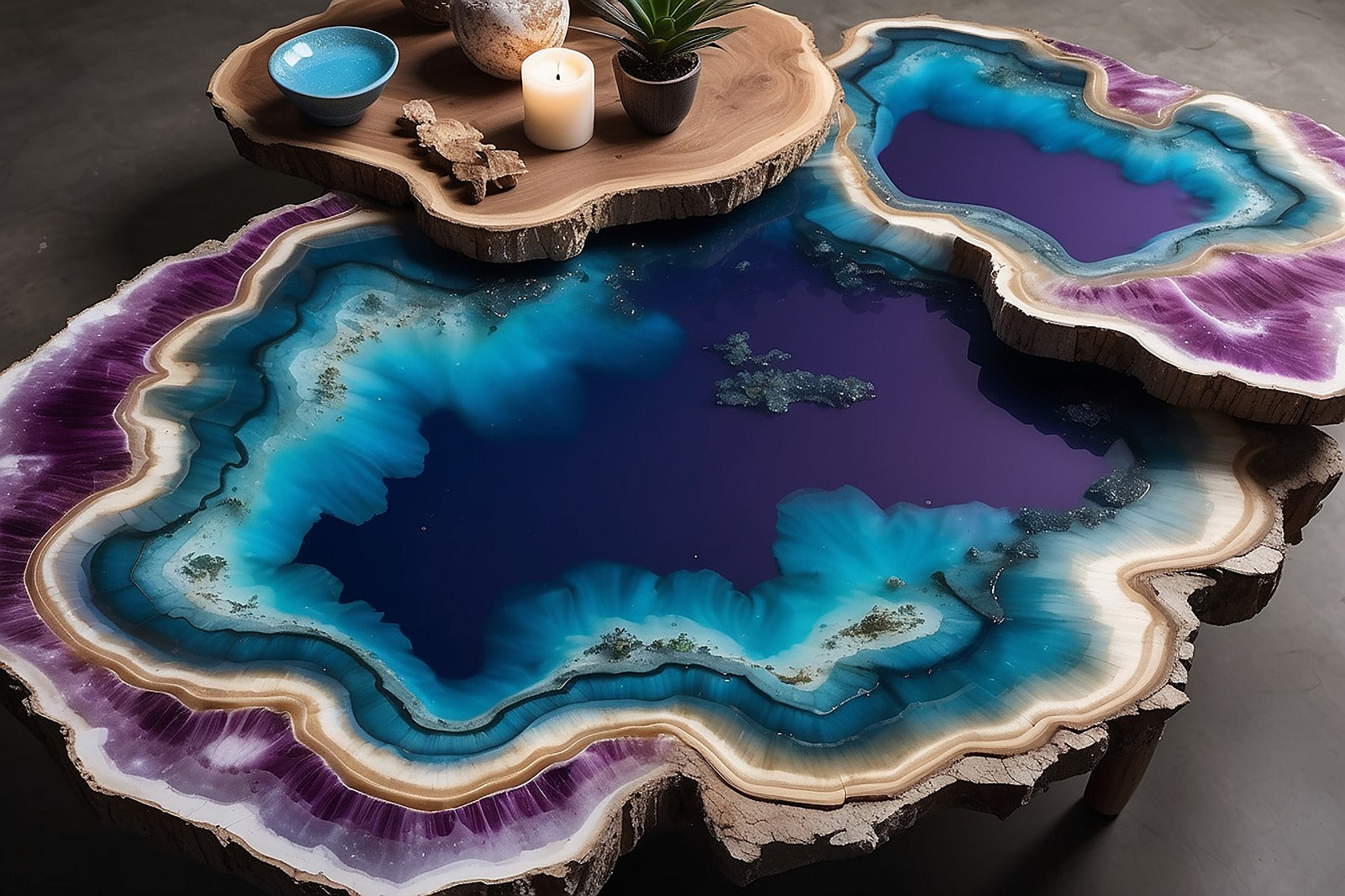Your Cart is Empty
Offering ShopPay at Checkout. Buy Now, Pay Later!
Offering ShopPay at Checkout. Buy Now, Pay Later!

Avoiding Craft Fails: 5 Common Resin Art Mistakes
May 20, 2025 4 min read
Avoiding Craft Fails: 5 Common Resin Art Mistakes
Resin art is an exciting and creative form of crafting that allows you to transform simple materials into beautiful, glossy masterpieces. From stunning coasters to intricate jewelry pieces and mesmerizing abstract wall art, the possibilities are endless. However, ifyou're just starting out, resin can seem intimidating. One wrong move, and your project could end up sticky or full of bubbles.
The good news? Most resin art fails are entirely avoidable! This guide will walk you through 5 common resin art mistakes and how to avoid them, helping you create professional-looking pieces every time.
Mistake 1: Not Measuring Resin and Hardener Correctly
Accuracy is everything when it comes to resin art. Measuring your resin and hardener incorrectly can lead to a sticky, tacky mess that never sets properly. Most resins require a precise ratio of resin to hardener, commonly 1:1 or 2:1, depending on the brand.
How to Avoid This Mistake:
-
Read the Instructions: Before getting started, carefully read your resin brand's instructions. Each product has its unique requirements.
-
Use Measuring Tools: Invest inaccurate measuring cups with clear markings. Avoideyeballing measurements, no matter how experienced you are.
-
Take Your Time: Rushing might lead to slight errors. Pour eachcomponent slowly into your measuring cups to ensure you get it right.
Proper measurement sets the foundation for your artwork. Think of it as an essential chemistry experiment, where precision ensures a successful outcome.
Mistake 2:Failing to Mix Thoroughly
Mixing resin and hardener properly is just as important as measuring them correctly. If the two componentsaren’t fully combined, you may end up with soft spots or uneven curing. Additionally, improper mixing can introduce excessive bubbles into your resin.
How to Avoid This Mistake:
-
Stir Slowly: Use a mixing stick (wooden or plastic). Stir the resin thoroughly but gently to minimize bubble formation.
-
Scrape the Edges and Bottom: Make sure you scrape the sides and bottom of your mixing container. Unmixed resin or hardener stuck to the edges can ruin your final mix.
-
Check for Consistency: Your resin should appear clear and uniform, without streaks, before you pour it.
The key here is patience. Spend 2-3 minutes mixing, depending on your resin type, to ensure everything comes together perfectly.
Mistake 3: Ignoring Safety Precautions
Resin may look fun and harmless, butit’s a chemical product that requires careful handling.Failing to use proper safety gear can expose you to harmful fumes or skin irritation.
How to Avoid This Mistake:
-
Use Personal Protective Equipment (PPE):
- Always wear gloves to protect your skin from the resin.
- Use a respirator mask to avoid inhaling fumes, especially if you’re working with non-ventilated epoxy resins.
- Eye protection is also a good idea in case of accidental splashes.
-
Work in a Ventilated Area: Ensure your workspace is well-ventilated to minimize exposure to resin fumes.
-
Protect Your Clothing and Surfaces: Resin can be messy, so wear an apron and cover your working surface to avoid stains.
By taking these precautions, you can safely enjoy your crafting experience without putting your health at risk.
Mistake 4: Rushing the Curing Process
Curing is where the magic happens. Unfortunately, many beginners rush this step, expecting their projects to be ready in just a few hours. Impatience often results in sticky or soft resin that never fully hardens.
How to Avoid This Mistake:
-
Follow the Curing Time: Every resin has a specific curing time, typically 24-72 hours. Resist the temptation to touch or move your piece before it fully cures.
-
Maintain the Right Temperature:Resin cures best in a consistent environment. Aim for a room temperature between 70°F and 80°F (21°C-27°C).
-
Avoid cold spaces, as lower temperatures can slow the curing process.
-
Plan Ahead: Set aside adequate time for your project to cure without interruptions.
Patience is your best friend when working with resin. Trust the process, andyou'll thank yourself when you see that glossy, rock-hard finish!
Mistake 5: Not Preparing the Workspace Adequately
Resin art is as much about preparation as it is about execution. A cluttered or uneven workspace can introduce dirt, dust, and frustration into your creative process.
How to Avoid This Mistake:
-
Work on a Clean, Level Surface:Use a spirit level to ensure your workspace is flat. Uneven surfaces can cause the resin to pool and cure unevenly.
-
Declutter Your Area: Keep your workspace free of unnecessary items to minimize contamination risks.
-
Protect Surfaces: Lay down a silicone mat, plastic sheet, or parchment paper to catch any spills or drips.
-
Keep Dust Away:Work in a low-dust environment.
-
Cover your finished piece with a dust-free cover (like a large box) while it cures.
A clean, organized workspace not only ensures a professional outcome but also makes the crafting process more enjoyable.
Master Resin Art with Confidence
Every resin artist, whether beginner or experienced, has made at least one of these mistakes. The key is to learn, practice, and improve. By paying attention to measurements, mixing thoroughly, prioritizing safety, being patient during curing, and preparing your workspace,you’ll quickly see your skills improve.
Resin art is as rewarding as it is challenging. The joy of creating something beautiful with your own hands makes all the effort worth it. Ifyou’re ready to take your resin art to the next level,don’t hesitate to keep practicing and exploring new techniques.
Happycrafting, and remember—every expert was once a beginner!

